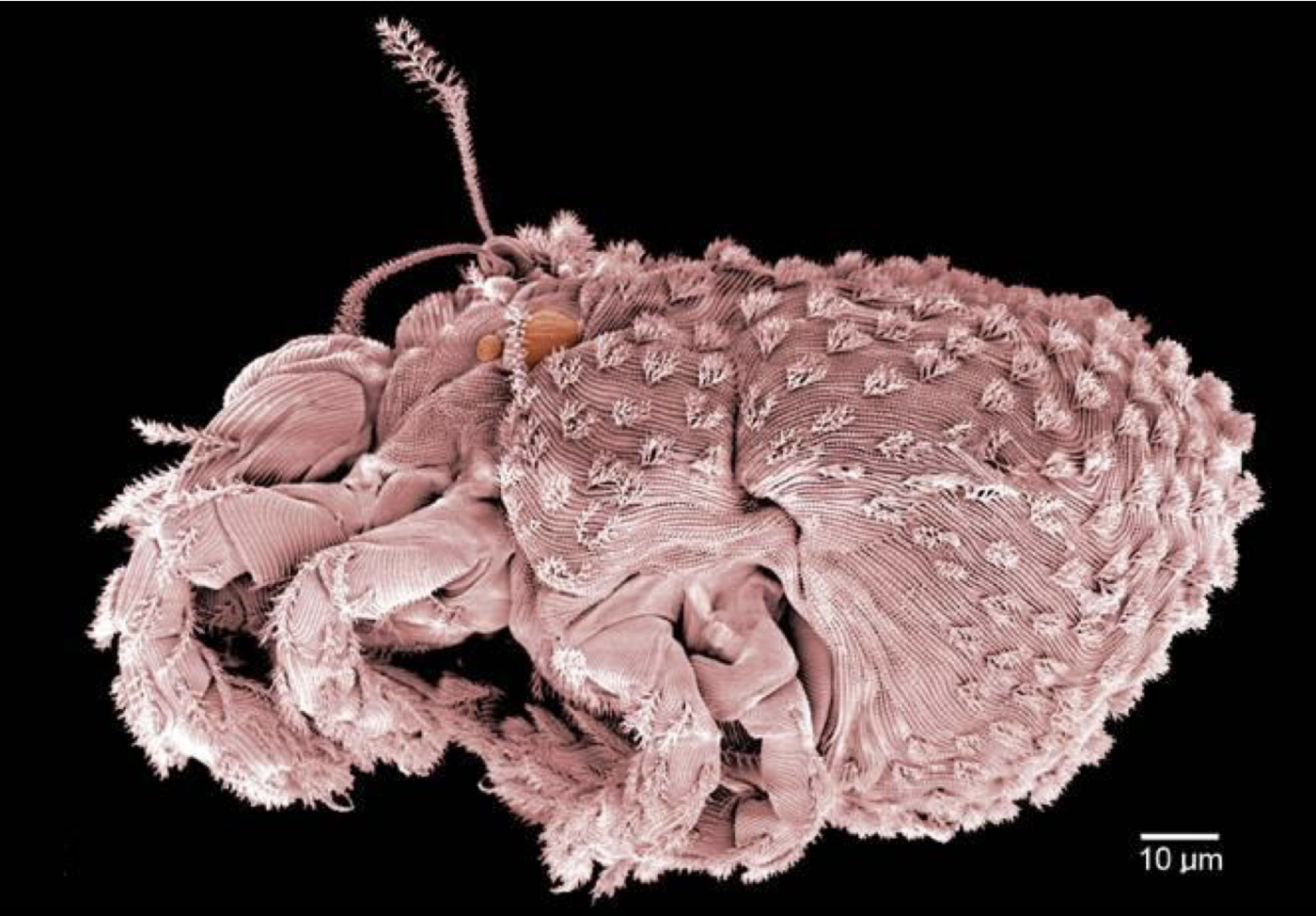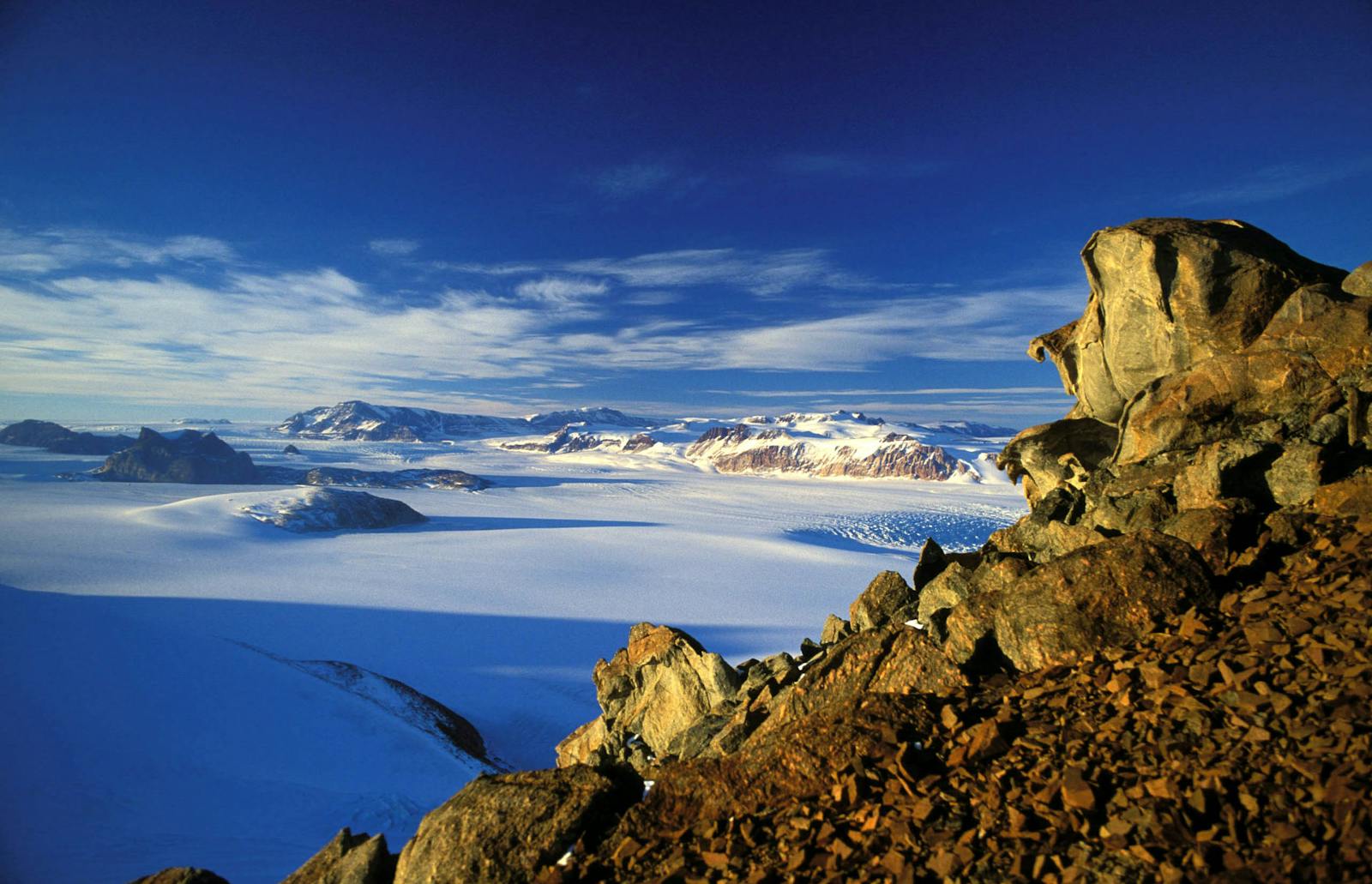Transantarctic Mountains Tundra
The ecoregion’s land area is provided in units of 1,000 hectares. The conservation target is the Global Safety Net (GSN1) area for the given ecoregion. The protection level indicates the percentage of the GSN goal that is currently protected on a scale of 0-10. N/A means data is not available at this time.
Bioregion: Continental Antarctica (AN1)
Realm: Antarctica
Ecoregion Size (1000 ha):
N/A
Ecoregion ID:
134
Conservation Target:
N/A
Protection Level:
N/A
States: Antarctica
The Transantarctic Mountains tundra ecoregion is by the far the largest of all the Antarctic ecoregions, at almost 20,000 km. This ecoregion extends from the Ross Sea to West Antarctica, covering a distance of around 2,500 km across the center of Antarctica. The ice-free areas making up this ecoregion are the coldest and most inhospitable of all the Antarctica, with 25% of all the ice-free areas above 2,000 m, a mean height of 1,700 m, and a maximum height of 4,412 m. The ecoregion encompasses one of the longest mountain ranges on the face of the planet and form a natural barrier between east and west Antarctica. It is entirely land locked with no true coastal features, although at its northern end it abuts the Ross Ice Shelf.
Due to the inhospitable environment of this region, biodiversity is scarce and largely limited to microbial life. Four species of bryophyte and 33 species of lichen been recorded in this region. A comprehensive inventory of the invertebrate fauna of the Darwin Mountains found mites (Stereotydeus sp.), nematodes (Scottnema lindsayae), tardigrades, and rotifers, although the authors noted that invertebrate species diversity was found to be low. Other commonly recorded invertebrates include the Antarctic mite Nanorchestes antartcticus, and the Antarctic springtails Anurophorus subpolaris and Tullbergia medianantarctica. Due to the inland nature of the ecoregion, no penguin colonies occur and no petrels or skuas have been recorded breeding.

The flagship species of the Transantarctic Mountains Tundra ecoregion is the Nanorchestes antarcticus (mite). Image credit: Courtesy of MTU Digital Commons
Although there are inland scientific stations in Antarctica, most of these are built on ice and there are no permanent structures in the Trans-Antarctic Mountains ecoregion. Scientific expeditions to the region occur sporadically, as does the occasional adventure tourism. However, tourists do not typically visit the region. There is one Antarctic specially protected area (ASPA 119) in the Pensacola Mountains. This ASPA was designated to protect unique biodiversity, primarily in the freshwater ponds. Due to its remoteness and minimal human visitation, this area is regarded as a potential scientific reference site of outstanding value.
Given the lack of biodiversity knowledge, particularly with regard to potentially fragile microbial communities, the most important conservation actions over the next decade are to undertake research to provide a better understanding the potential impacts of human activities in the region; initiate systematic conservation planning processes to identify vulnerable areas and improve the regional representation of ASPAs; ensure a stable Antarctic Treaty system to maintain the overall protection of Antarctica through the Protocol on Environmental Protection to the Antarctic Treaty System.
Citations
Terauds, A., S. L. Chown, F. Morgan, H. J. Peat, D. J. Watts, H. Keys, P. Convey, and D. M. Bergstrom. (2012) Conservation biogeography of the Antarctic. Diversity and Distributions 18:726-741.
Terauds, A., and Lee, J. R. (2016) Antarctic biogeography revisited: updating the Antarctic conservation biogeographic regions. Diversity and Distributions 22:836-840.
Chown, S.L. & Convey, P. (2007) Spatial and temporal variability across life’s hierarchies in the terrestrial Antarctic. Philosophical Transactions of the Royal Society B: Biological Sciences, 362: 2307–2331.



